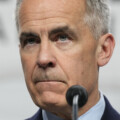Via Rail made news over the holidays for all the wrong reasons. A crippling storm combined with a few related infrastructure failures caused massive delays between Toronto and Ottawa. Many passengers, myself included, were delayed by upwards of three hours (the unlucky ones were stuck for much longer). Some got stuck at home alone on Christmas (like my partner). It’s understandable that people are upset.
I won’t re-litigate the issue. As I’ve previously written, I don’t think there’s an obvious scapegoat, and improving rail service in Canada (or at least along the Windsor to Quebec City corridor) will take time. But the travel incident brought renewed scrutiny upon Via Rail, which extended to the CEO’s compensation package. Frankly, it was a reminder that we probably don’t pay executives at crown corporations enough to attract top talent in most cases.
I don’t mean this to sound disparaging. I have no basis to evaluate the job performance of the current CEOs of Canadian crown corporations. However, failing to offer a competitive compensation package for top executives can mean a shallow pool of qualified applicants (not everyone has the experience to run a passenger rail company). It could be that public-spirited executives are willing to take a pay cut to serve the public or to potentially have a better work-life balance than private-sector comparators. That’s a bit like hockey teams shopping for hometown discounts during the off-season. Now and then they succeed, but more often than not top players won’t take huge discounts. Especially not the kind of discount CEOs of TSX-listed companies would have to take to run a crown corporation.
Just how big would that discount be? The total compensation range listed for the CEO in Via Rail’s corporate plan is $398,212 to $529,280. That sounds like a lot of money until you compare it to what private sector CEOs earn. I’m not talking about Jamie Dimon or Warren Buffet here either. This falls far short of what the top 100 CEOs earn in Canada. Not just at the higher end, but the lower end.
To get a sense of the difference, consider the Canadian Centre for Policy Alternatives’ annual ranking of Canadian CEO compensation. While I don’t tend to agree with their takeaways on the issue, and I’m sure they’d be mortified to have their research used in defence of paying CEOs more, it is nevertheless a handy resource. In 2021, total compensation for the top 100 Canadian CEOs ranged from $6,678,084 to $140,778,515. The latter is far from typical—nearly $100 million greater than the second-place CEO. Let’s focus on the lower-paid CEOs for comparison.
Much of private sector CEO compensation takes the form of bonuses and stock-based compensation rather than salary. In fact, as the CCPA study points out, salary made up around eight percent of total compensation for the top 100 Canadian CEOs in 2021. If we look just at salary, there were eleven CEOs with lower base compensation than the total compensation for Via’s CEO. That includes four CEOs who take zero salary but had compensation of over $10 million dollars. In other words, even if one of the top 100 best-compensated CEOs in Canada left millions of dollars in annual variable compensation on the table to work for a crown corporation, their base compensation would still be lower in most cases.
That’s more than a haircut. That’s potentially the difference between having a penthouse in New York and a nice home in Oakville; between taking a cruise now and then and owning a yacht; between never worrying about money again and worrying a little bit about money. I’m not suggesting we shed tears for the only slightly rich CEO in Oakville. But I also doubt many readers would trade the yacht and the penthouse for a merely affluent retirement to do the same job at a company they like a bit more.
Money isn’t everything. Sometimes highly sought-after employees decide to take a job for non-monetary reasons. But compensation still matters. Consider John Tavares—the kid with the Maples Leafs pajamas who dreamt of raising the Stanley Cup in Toronto. He only took a 12-15 percent discount to play for the Leafs. It’s hard to picture a CEO at the top of their game taking a fifty or eighty or even ninety percent pay cut to run Via Rail—no matter how much you might romanticize trains.

Now, of course, one might be morally opposed to high levels of compensation for CEOs. Fair enough. I happen to think that lightly regulated capitalism works pretty well. Maybe at the margins there are some things that could or should be done to tamp down on potential excesses of compensation. That’s not really my view, but reasonable people can disagree.
I certainly don’t think paying the CEO of a crown corporation one-tenth of what the hundredth best-paid private sector CEO earns is going to attract a deep pool of applicants to run crown corporations. As someone who wants them to run well, I’d be inclined to dedicate a slightly tinier fraction of their overall budgets to executive compensation. Incentives matter, after all.
That isn’t to say that Via Rail is doing a bad job under the circumstances. Maybe the CEO is doing a good job, maybe he’s not. If he’s doing a good job, great. If he’s not, they should pay someone else more. A national passenger rail operator shouldn’t sweat over a rounding error in its budget. And neither should taxpayers.
Recommended for You

The Notebook by Theo Argitis: Mark Carney’s first major tests

Canada is losing ground on investment. Here’s where

‘Those deficits are almost surely going to rise’: Trevor Tombe on the fiscal challenges facing the Carney government

‘There can be massive policy investments made in AI literacy’: Five takeaways from John Stackhouse, Janice Gross Stein, and Jaxson Khan on the race for AI adoption in Canada



